Learn more about shooting skiing at http://www.actionphotoschool.com!
When we shoot natural light (that doesn’t happen very often) the first thing we do is, get in Photoshop and brighten the subject a little bit. This way they stand out and your eye goes straight to them. Instead of using Photoshop, take one flash, put it off camera, and get much better results.
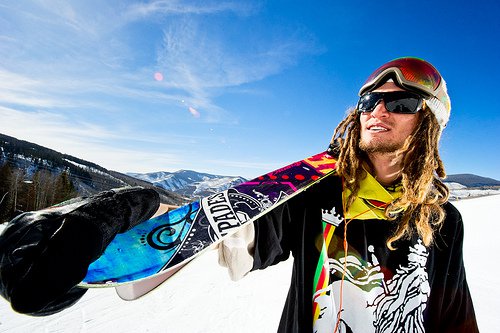
To capture great flash shots, you don't have to spend all your money and get the best flash available… You can shoot with a sub-$100 Vivitar 285VH or spend five times that amount for top of the line Canon or Nikon flash. Either way you can achieve great results! To get started you will need a flash, and some way of triggering it remotely. To learn about remote triggering, check out this article: Basics of Off-Camera Flash
There are a couple different approaches that will improve your images with one flash. Often times the sun itself helps and will work for you as a second flash that is really powerful and free to use. Always keep that in mind and don't try to overpower the sun!
With portraiture, it works very well to have the flash a few feet next to you at about a 45 degree angle. This produces edgy side lighting so your subject doesn’t look flat. This edgy harsh light will create a very "actiony" looking dramatic image.
On to the action…..
The first thing you can do when shooting sports outdoors is to find out where the sun is and position your flash on the opposite side of the athlete so he is sandwiched between the sun and the flash. You will need to have quite a bit of power to add that extra fill light on your athlete, it helps to get the flash in as close as possible to get enough light. When you shoot like this towards the sun, it will create a nice rim light around your athlete and your flash will expose him so he is not a silhouette. Here is a shot that demonstrates this technique:
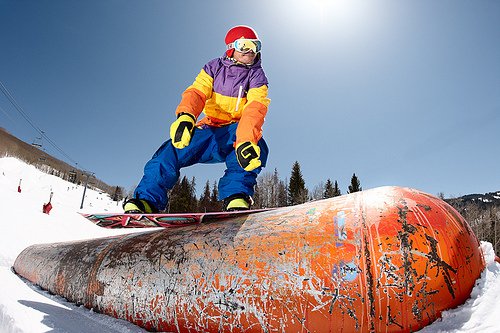
If it’s later during the day and the sun is not as strong, then you can position the athlete so the sun is your main light and have your flash on the other side or behind the athlete. It is the same cross lighting as the previous method but you use the sun as main light and your flash as rim. This method usually works best at sunsets when your flash will have enough power to create a strong rim. Sunset's also add that nice warm light that makes the image even more pleasing to the eye.
If it is an overcast day, balance flash and ambient to get a nice and evenly lit scene.
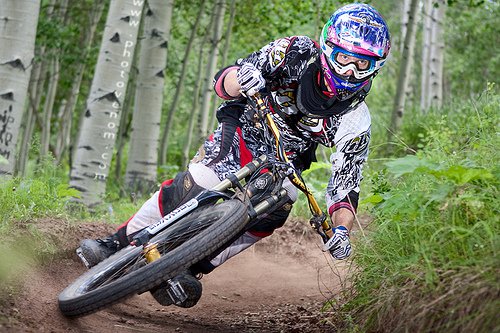
There are several little things that you have to keep in mind when shooting sports with one flash. In every action sports the athletes are using different “things” for their sports and they all cast shadows. For example downhill bikers usually have helmets with visors and if you have the flash too high you will get a shadow over their face. If you are shooting a skier or snowboarder flying off a half-pipe or jump and your flash is too low the snowboard or skies will cast a shadow on your subject. Before positioning the flash, think about the direction of the light and what shadows it could produce. Also make sure your flash is not in the shot, rookie move!
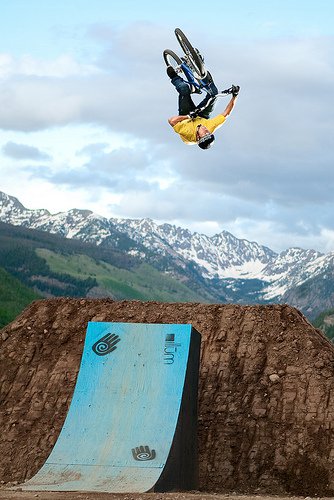
It is easy to get carried away and crank the power of the flash all the way because it looks good on the back of the camera, don’t do that! Most of the time it is better to have the flash further away so it doesn’t have a hot spot and set the flash at a lower power setting to achieve a perfect balance of fill/ambient.
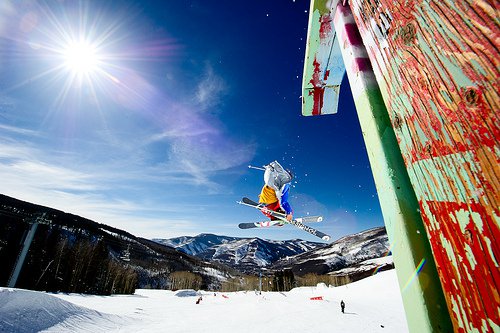
Flash will seperate your work from the masses. It will help define your style and make your images unique. Learn to use flash correctly and prepare for a whole new approach to every shoot!




Comments